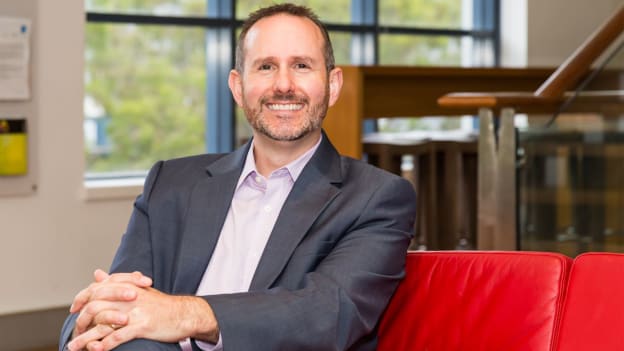The pandemic really pushed the boundaries around flexible work in Australia: Christian Campanella, Pernod Ricard

While the vaccines are here, the war is yet to be won. COVID-19 is still raging in many parts of the world and organizations are gearing up to sail through the uncertainty with a greater focus on continuity plans and employee support schemes.
While things are more settled in Australia and New Zealand, the war for talent is heating up as borders remain shut and talent from abroad remains off-limits. In an exclusive interaction with us, Christian Campanella HR, Communications & Sustainability & Responsibility (S&R) Director at Pernod Ricard throws light on how Australian firms are rethinking talent management and gearing up for culture reset.
The toughest time has been looming and companies have had to ensure business continuity and productive output while supporting their workers. How is Pernod Ricard ensuring that?
We are a global wine business and manage operations across Spain, Australia, New Zealand and the US. With those four countries in my perimeter, the experience has been very different during the pandemic. Apart from the initial lockdowns, Australia and New Zealand have been somewhat immune to the impacts we have seen globally on account of borders being shut, as opposed to our operations in Spain and the USA, which has been far more restricted. Regardless, there have been significant complexities in keeping our operations running which have required specific health and safety measures to safeguard our people. Measures such as having working bubbles in production sites to minimize physical contact and to ensure protection should an outbreak occur on site.
Also, like many other companies, flexible work has become prevalent. We already had a culture of flexibility within our business and the technology to support this prior to the pandemic arriving. So, transitioning to remote work when the lockdowns have occurred have been relatively seamless.
How should organizations rethink talent management amid all this uncertainty? What is Pernod’s focus here?
If I speak about Australia, as the borders have been shut, our ability to bring talent in Australia from overseas has been cut. With the Australian economy strong, the war for talent has gone to another level. Job advertisements in Australia have soared this year as compared to last year while the number of candidates has reduced. Australia’s job site SEEK has reported that they have seen the highest amount of job advertisements since their inception. So, as the market is hot, for us it’s about how do we retain the talent that we have in our organization. Because to replace them it is extremely difficult.
How should organizations level up their employee support systems and work policies? What has Pernod Ricard done in this regard?
So there are two parts to this. The first one is with regards to flexible working. From the beginning, Pernod Ricard has had flexible working embedded in the organization. Hence when we moved into remote working on account of Covid, it was quite seamless for us. Similarly, to move people back into the office, which we started doing last year, was again a very natural process. Talking about Australia, what the pandemic has done is really pushed the boundaries around what flexibility looks like and the type of work that can be done flexibly. So that people now see this not as a benefit, but as a right.
The second piece is the focus on well-being, particularly around mental health and hyper connectivity. When you work from home, you end up working longer hours and there is less distinction between work and home. Hence a lot of companies have had to focus on well-being as quite frankly the pandemic has been wearing people out.
People have had enough of all the uncertainty and the ambiguity. Hence mental well-being has become a trending focus area for organizations.
How can organizations integrate technology in a way that strengthens culture?
It’s an interesting conversation and I would like to share our take. Our purpose as an organization is being creators of conviviality. What we say is it’s hard to be convivial while you are remote. Humans are humans-there is still a need for physical connection and interaction. The last eight months have reinforced the need to do that but also clarify for what purpose you do it. For instance, when we speak about people returning to the office, what’s the role of the office? Why do people come to the office? So for us, it is around conviviality, connection, creativity, and collaboration.
But we also realized that flexible working also has a role to play. So if you are doing focused work or independent work, flexible work is quite conducive for that. That flexible approach also enables well-being in other aspects of life. Hence organizations need to see what role different elements play and connect it back to the culture you are trying to drive. So for our organization, we are not a 100% remote organization, because if we are not physically interacting, how do we translate conviviality to our customers. But we are a flexible organization and were so well before the pandemic started.
What are some of the best practices you will advise to organizations to embed trust and transparency in the virtual working environment?
I would come back to the point on why you allow flexible work. When we launched our flexible work policy many years ago, it was actually linked to our diversity and inclusion strategy. In order to drive a diverse and inclusive environment, we introduced flexibility to attract diverse people to our organization. We educated our managers around how D&I is a business driver; what we also did was built on the capability of our leaders to manage diverse teams remotely.
One of our values is mutual trust and we have done a lot of work in educating our managers and people on what it means and the fact that it is a two-way street. I don’t think it is one particular thing - it is a number of different activities that you need to do in order to build trust in your organization.
And fundamentally, it will start with the leadership at the top. They need to demonstrate trust in people and lead by example. If they are in an environment which is very much a command and control management type, then obviously it is not conducive to building an organization where people trust each other.

















